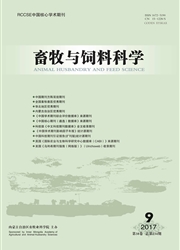

 中文摘要:
中文摘要:
自噬是一种高度保守的经溶酶体介导的对细胞内蛋白质和细胞器进行降解、维持细胞内环境的自身稳定的过程。自噬参与细胞生理过程,影响一些人类疾病的进展,包括癌症、炎症和神经系统疾病等,并且充当细胞防御机制,以防止某些致病细菌和病毒感染。目前,研究自噬的方法很多,如可通过透射电子显微镜观察到自噬体的形态结构,对所测自噬体大小和数量的计算推断自噬活性的强弱;通过检测自噬体膜标志性蛋白质LC3检测细胞自噬的发生;利用单丹(磺)酰戊二胺(MDC)染色法检测自噬体;检测自噬通量。对常用检测自噬的方法做一介绍,供自噬研究者参考。
 英文摘要:
英文摘要:
Autophagy is a highly conserved and lysosomal-mediated process for the degradation of intracellular proteins and organelles to maintain the intracellular environment. Autophagy is involved in cellular physiological processes that affect the progression of some human diseases, including cancer, inflammation, and nervous system diseases. Meanwhile, it also acts as a cellular defense mechanism to prevent the host from infections caused by certain pathogenic bacteria and virus. At present, there are many ways to study autophagy: observing the morphological structure of autophagosome by transmission electron microscopy;estimating the autophagic activity by calculating the size and number of the tested autophagosome; determining the occurrence of autophagy in cells by testing the presence of autophagy protein LC3 in autophagosome membrane; detecting the autophagosome by monodansylcadaverine(MDC) staining method; determining the autophagic flux. The commonly used detection methods for autophagy are introduced, in hoping to provide references for the autophagy researchers.
 同期刊论文项目
同期刊论文项目
 同项目期刊论文
同项目期刊论文
 期刊信息
期刊信息
